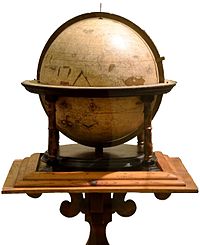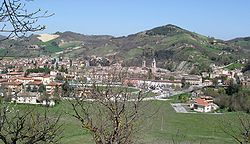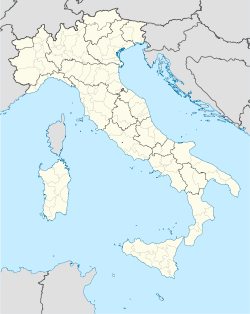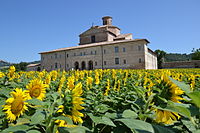- Urbania
-
For the 2000 film, see Urbania (film)
Urbania — Comune — Comune di Urbania Location of Urbania in Italy Coordinates: 43°40′N 12°31′E / 43.667°N 12.517°ECoordinates: 43°40′N 12°31′E / 43.667°N 12.517°E Country Italy Region Marche Province Pesaro and Urbino (PU) Frazioni Barca, Campi Resi, Campolungo, Gualdi, Muraglione, Orsaiola, Ponte San Giovanni, San Lorenzo in Torre, San Vincenzo in Candigliano, Santa Maria del Piano, Santa Maria in Campolungo, Santa Maria in Spinaceti Area – Total 77.8 km2 (30 sq mi) Elevation 273 m (896 ft) Population (Dec. 2004) – Total 6,804 – Density 87.5/km2 (226.5/sq mi) Demonym Urbaniesi, Durantini Time zone CET (UTC+1) – Summer (DST) CEST (UTC+2) Postal code 61049 Dialing code 0722 Patron saint St. Christopher Saint day July 25 Website Official website Urbania is a comune (municipality) in the Province of Pesaro e Urbino in the Italian region of Marche, located about 80 km west of Ancona and about 40 km southwest of Pesaro, next to the river Metauro.
Urbania borders the following municipalities: Acqualagna, Apecchio, Cagli, Fermignano, Peglio, Piobbico, Sant'Angelo in Vado, Urbino.
It is a famous ceramics and majolica production centre. In recent years, it has become more closely associated with the Befana folk tradition.
Contents
History
Originally known as Castel delle Ripe, it was a free commune of the Guelph party. In 1277 it was destroyed by the Ghibellines, then rebuilt by the Provençal Guillaume Durand in 1284 and christened Casteldurante. Later it was ruled by the Brancaleoni family. When the latter were ousted, the city offered itself to the Dukes of Urbino, who used the palace in the city as summer residence and had it restored by architects such as Francesco di Giorgio Martini. The last della Rovere duke, Francesco Maria II, is buried in the Ducal Palace of Urbania.
In 1631 it became part of the Papal States. Five years later its name changed to the current one, in honor of Pope Urban VIII.
On January 23th 1944 Urbania was bombed by the Allies, resulting in the deaths of 250 civilians.[1] It was a Sunday so the people had gathered in the town, increasing the number of victims.
After World War II Urbania received the Bronze Medal for Military Valour for the deeds of its citizens during the partisan warfare.
Main sights
 Globe signed by Mercator and dated 1541; now in the 'Palazzo Ducale' museum. It is one of about 22 existing Mercator globes.[2]
Globe signed by Mercator and dated 1541; now in the 'Palazzo Ducale' museum. It is one of about 22 existing Mercator globes.[2]
- Ducal Palace, housing a museum and a library with globes made by the Flemish-born, German natural scientist Gerardus Mercator between 1541 and 1551.
- Chiesa dei Morti (Church of the Dead), with 18 natural mummies from the Middle Ages and the Renaissance exposed behind the altar.
- The medieval walls.
- The 'Barco Ducale' is one kilometer outside of the town. It was erected in 1465. After an earthquake, it was rebuilt between 1741 and 1771. Normally you can not enter the building.
Population History

Trivia
Urbania features as the main setting of Ci Siamo (ISBN 1-86391-109-X) a textbook for students of Italian used by many Australian students in the middle years of high school.
References
External links
Marche · Comuni of the Province of Pesaro and Urbino Acqualagna · Apecchio · Auditore · Barchi · Belforte all'Isauro · Borgo Pace · Cagli · Cantiano · Carpegna · Cartoceto · Colbordolo · Fano · Fermignano · Fossombrone · Fratte Rosa · Frontino · Frontone · Gabicce Mare · Gradara · Isola del Piano · Lunano · Macerata Feltria · Mercatello sul Metauro · Mercatino Conca · Mombaroccio · Mondavio · Mondolfo · Monte Cerignone · Monte Grimano · Monte Porzio · Montecalvo in Foglia · Monteciccardo · Montecopiolo · Montefelcino · Montelabbate · Montemaggiore al Metauro · Orciano di Pesaro · Peglio · Pergola · Pesaro · Petriano · Piagge · Piandimeleto · Pietrarubbia · Piobbico · Saltara · San Costanzo · San Giorgio di Pesaro · San Lorenzo in Campo · Sant'Angelo in Lizzola · Sant'Angelo in Vado · Sant'Ippolito · Sassocorvaro · Sassofeltrio · Serra Sant'Abbondio · Serrungarina · Tavoleto · Tavullia · Urbania · UrbinoCategories:- Cities and towns in the Marche
- Communes of the Province of Pesaro and Urbino
- Ducal Palace, housing a museum and a library with globes made by the Flemish-born, German natural scientist Gerardus Mercator between 1541 and 1551.
Wikimedia Foundation. 2010.



